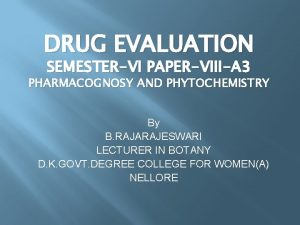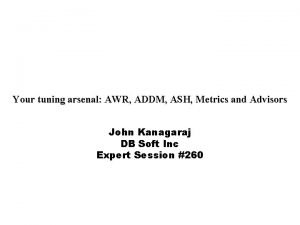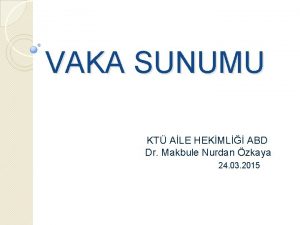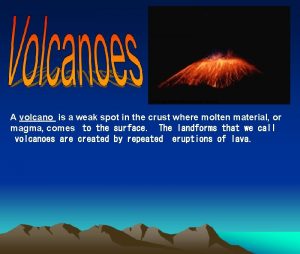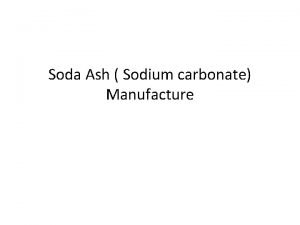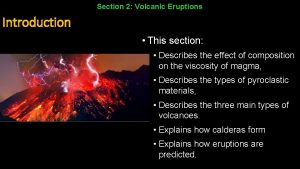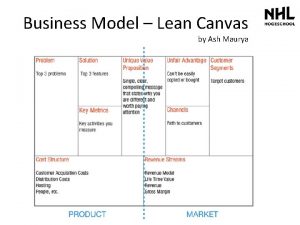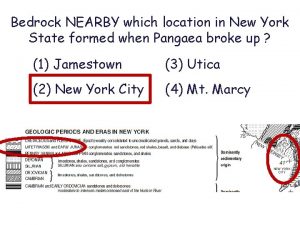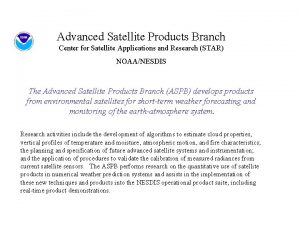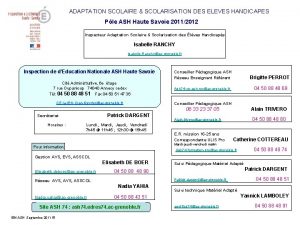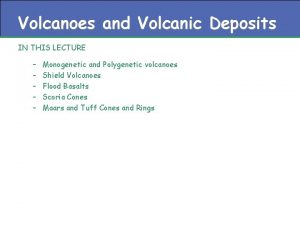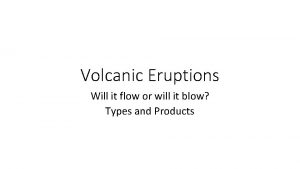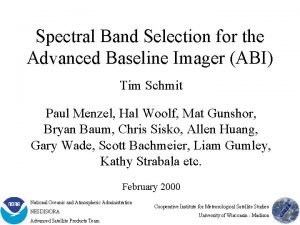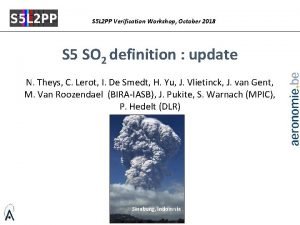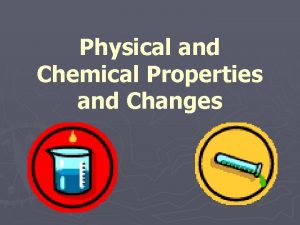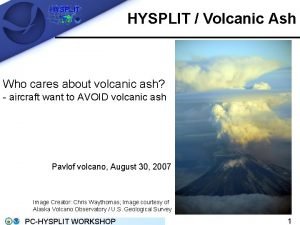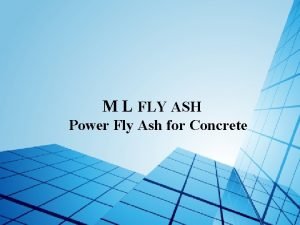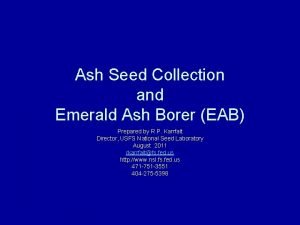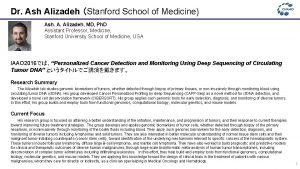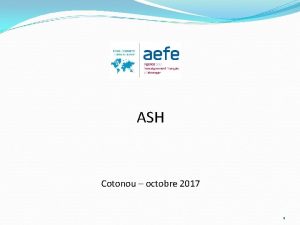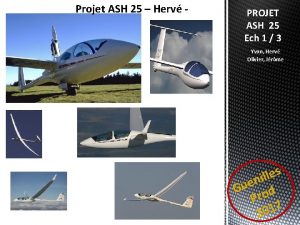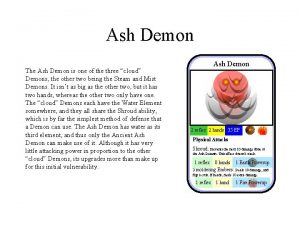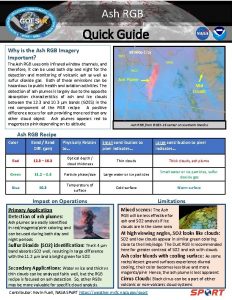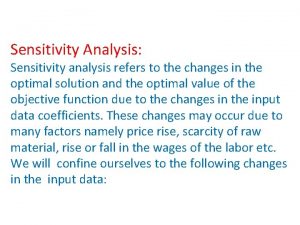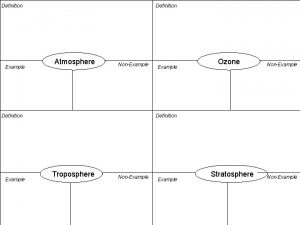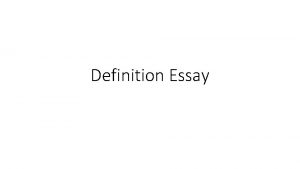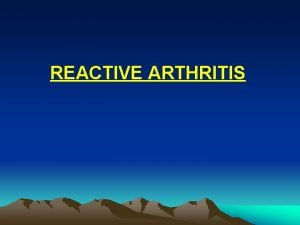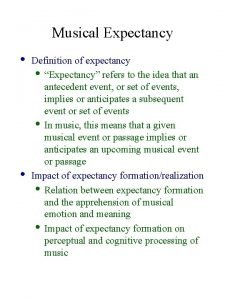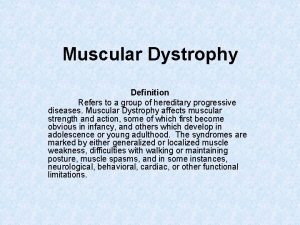ASH ANALYSIS v Definition Ash refers to 1


























- Slides: 26

ASH ANALYSIS

v Definition: Ash refers to 1) the inorganic residue remaining after either ignition or complete oxidation of organic matter in foodstuff v. Organic compounds are decomposed at high temperature (500 C° - 600 C°) , the remaining residue is the ash (inorganic compounds). This residue such as phosphates, chlorides, sulfates, sodium, potassium, calcium, magnesium, iron, Then, and manganese. Ash refers to the inorganic compounds that remain after complete oxidation of organic matter in food stuff.

2) Importance of ash in food analysi 1. Ash content represents the total mineral content in foods. 2. It is a part of the proximate analysis for nutritional evaluation. 3. Ashing is the first step in the preparation of a food samples for specific elemental analysis.

3) Ash content in foods ● content of the various food groups are given in table 7 -1

4) Sample preparation 1. A 2 -10 g sample generally is used for ash determination. 2. Repeated use of glassware can be a source of contaminants as well. 3. The water source used in dilutions must be distilled.

4) Sample preparation 4 -1 Plant materials ► Plant materials are dried by routine methods before grinding and the temperature of drying is of little consequence. ► Plants with 15% or less moisture content may be ashed without drying.

4) Sample preparation 4 -2 Fat and sugar products ◙ Animal products, syrups and spices require treatments before ashing because of high fat , high moisture and high sugar content that may result in loss of sample. ( Why? ) ◙ Meats, sugars and syrups need to be evaporated to dryness on a steam bath or with an infrared (IR) lamp. ◙ A sample may be ashed after drying and fat extraction, what does it means?

5) Types ashing of (5 -1) Dry Ashing. (5 -2) Wet ashing.

(5 -1) Dry Ashing q Refers to incineration at high temperature 525 C° or higher and this accomplished with the use of a muffle furnace. q Most minerals are converted to oxides , sulfates , phosphates, chlorides and silicates. q Elements such as Fe , Se , Pb and Hg may partially volatilize with this procedure so, other methods may be used if ashing is a

The advantages of the dry ashing are that : 1) It is safe method. 2) It requires no added reagents or blank subtraction and little attention is needed once ignition begin. 3) Usually a large number of crucibles can be handled at once and the resultant ash can be used for such other analyses.

The disadvantages of dry ashing are: 1. The length of time required (12 -18) hr or overnight. 2. The expensive equipments. 3. There will be a loss of the volatile elements.

Procedure: T he general procedure include the following steps 1) Weigh a 5 -10 g sample into the crucible. Predry if the sample is moisture, fat or high sugar content. 2) Place crucibles in cool muffle furnace. Use strong gloves , and protective eyewear if the muffle furnace is warm. 3) Ignite 12 -18 hr (or overnight) at about 550 C °

Procedure: 4) Turn off muffle furnace and wait to open it until the temperature has dropped to at least 250 C. 5) Open door carefully to avoid losing ash that may be fluffy. 6) Using safety tongs , quickly transfer crucibles to a desiccators' with a porcelain plate and desiccant substance. Cover crucibles , close desiccators and allow crucibles to cool prior to weighing.

The ash content is calculated as follows 1) MASH refers to the ashed sample, and MDRY refer to the dried and wet samples. 2) % ash (dry basis) = Wt after ashing – tare wt of crucible Original sample wt X dry matter coefficient Where dry matter coefficient = % solids / 100

The ash content is calculated as follows % ash (dry basis) = Wt after ashing – tare wt of crucible Original sample wt X dry matter coefficient Dry matter coefficient = % solids / 100 For example, if corn meal is 87% dry matter, the dry coefficient would be 0. 87

5 -2 Wet ashing: q Refer to a procedure for oxidizing organic substances by using acids and oxidizing agents or their combinations it also called wet oxidation or wet digestion. ►Mineral are solubilized without volatilization. Wet ashing often is preferable to dry ashing as a preparation for specific elemental analysis. Wet ashing often uses a combination of acids.

The advantages to using the wet ashing are: Ø Minerals will usually stay in solution and there is little or no loss from volatilization because of the lower temperature Ø The oxidation time is short and requires a hood , hot plate and long tongs , plus safety equipment

The disadvantages to using the wet ashing 1. It takesare; virtually constant operator attention , corrosive reagents are necessary. 2. Only small numbers of samples can be handled at any one time. 3. If the wet digestion (oxidation) utilizes perchloric acid , all work needs to be carried out in an expensive special fume hood called perchloric acid hood because it is extremely dangerous since the perchchloric acid has the tendency to explode. Precautions for use of percholric acid are found in the AOAC methods under “Safe Handling of Special Chemical Hazards”.

The disadvantages to using the wet ashing are; 4. Cautions must be taken when fatty foods are wet ashed using percholric acid. While percholric acid does not interfere with atomic absorption spectroscopy , it does interfere in the traditional colorimetric assay for iron by reacting with iron in the sample to form ferrous perchlorate which forms an insoluble complex in the procedure.

Procedure: The following is a wt ash procedure using concentrated nitric and sulfuric acids (to be performed in a fume hood ) : 1. Accurately weigh a dried , ground 1 –g sample in a 125 - ml erlenmeyer flask. 2. Prepare a blank of 3 ml H 2 SO 4 and 5 ml HNO 3 to be treated like the sample ( Blank is to be run with every set of samples ). 3. Add 3 ml H 2 SO 4 followed by 5 ml HNO 3 to the sample in the flask 4. Heat the sample on a hot plate at 200 C (Boiling). Brown yellow fumes will be observed

Procedure: 5. Once the brown – yellow fumes cease and white fumes from decomposing H 2 SO 4 are observed , the sample will become darker. Remove the flask from the hot plate. Do not allow the flask to cool to room temperature. 6. Slowly add 3 -5 ml HNO 3. 7. Put the flask on the hot plate and allow the HNO 3 to boil off. 8. Proceed to the next step when all the HNO 3 is removed and the color is clear to straw yellow. If the solution is still dark in colour add another 3 -5 ml HNO 3 and boil.

Procedure: 9. Repeat the process until the solution is clear to straw yellow. 10. Allow the sample to cool to room temperature , then quantitatively transfer the sample to a 10 – ml volumetric flask. 11. Dilute the sample to volume with ultrapure water, and mix well. Dilute further , as appropriate , for the specific type of mineral being analyzed

Procedure (another The following procedure for a modified mouthed): dry – wet ash oxidation, may be used 1. Evaporate moist samples (25 -50 ml) at 100 C overnight or in a microwave drying oven. 2. Heat on a hot plate until smoking ceases 3. Ash at 525 C for 3 - 5 hr. 4. Cool and wet with deionized distilled water plus 0. 5 – 3. 0 ml HNO 3 5. Dry on a hot plate or steam bath and incinerate at 525 C for 1 -2 hr. 6. Weigh sample after cooling in a desiccators Repeat steps 4 and 5 if carbon persists. ( some K may be lost with repeated ashing )

► Both wet ashing and dry ashing can be done using microwave instrumentation. rather than the conventional dry ashing in a muffle furnace and wet ashing in a flask or beaker on plate the ashing procedures by ► a hot While conventional means can take many hours , the use of microwave instrumentation can reduce sample preparation time to minutes

Other Ash Measurements The following are some special ash measurement and their application 1) Soluble and insoluble ash – Applied to fruits. 2) Ash insoluble in acids – A measure of surface contamination of fruits and vegetables and wheat and rice coating ; contaminants are generally silicate and remain in acid 4) Alkalinity of Ash-insoluble Ash of fruits and. vegetables is alkaline ; ash of meats and some cereals is acid. 5) Sulfated Ash – Applied to sugars , syrups and color additives.

Thank you
 Ash value definition in pharmacognosy
Ash value definition in pharmacognosy Define ash value
Define ash value Difference between awr and addm
Difference between awr and addm Soda ash procurement
Soda ash procurement Tüberoskleroz tanı kriterleri
Tüberoskleroz tanı kriterleri Which letter indicates when dinosaurs became extinct
Which letter indicates when dinosaurs became extinct Volcanic ash
Volcanic ash Soda ash properties
Soda ash properties Volcanic ash
Volcanic ash Volcanic ash
Volcanic ash Burnt ash primary school
Burnt ash primary school David ash psychiatrist
David ash psychiatrist Slidetodoc
Slidetodoc Ash maurya's lean canvas
Ash maurya's lean canvas Jam'u fi ash-shudur
Jam'u fi ash-shudur Thin layers of volcanic ash act as excellent time markers
Thin layers of volcanic ash act as excellent time markers Volcanic ash
Volcanic ash Ien ash 88
Ien ash 88 Objectives of landforms
Objectives of landforms Volcanic ash
Volcanic ash Volcanic ash
Volcanic ash Volcanic ash
Volcanic ash Volcanic ash
Volcanic ash Volcanic ash
Volcanic ash Volcanic ash
Volcanic ash Chemical properties of air
Chemical properties of air Charcoal in a fire turns to ash after several hours.
Charcoal in a fire turns to ash after several hours.
